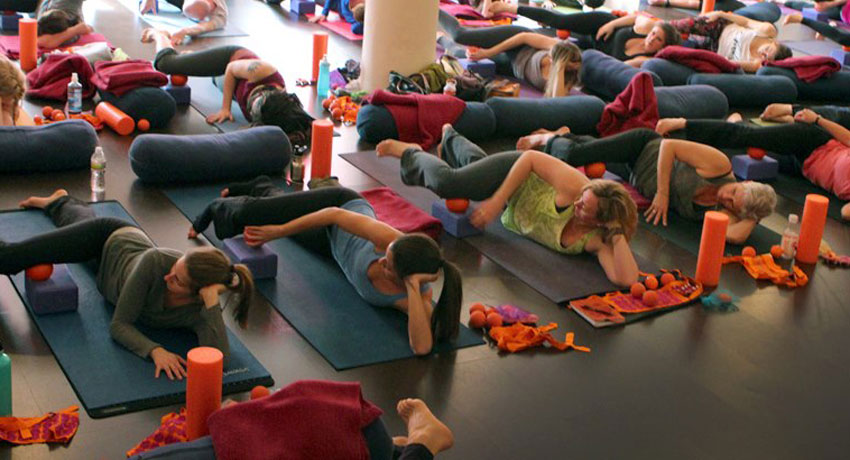Harmonizing The Body and Mind

SOMA system class image provided
In an era where office work is synonymous with computer work, most of us spend at least 40 hours a week hunched over a keyboard. Over time, although you may not notice it or you just ignore it, the muscles in your shoulders and arms start to accumulate tension. Add mental stress into the mix and before you know it, your tense shoulders and racing mind won’t let you sleep at night. Harvard School of Public Health graduate Roman Torgovistky has developed a holistic exercise system that combines deep tissue self bodywork with meditation to relieve the emotional stress from the mind, and physical stress from the body, all to ultimately help achieve that perfect night’s rest.
While studying for his graduate degree in sleep medicine at Harvard School of Public Health, Torgovitsky became interested in the connection between muscle tightness due to stress and sleep impairments. “There are some methods in sleep medicine that try to work with muscles, but nobody really pays direct attention to the mechanical properties of the muscle tissues,” he says.
With his background experience in martial arts and bodywork (a kind of stress relieving massage therapy), Togorvitsky began to explore how breaking down muscle tension could help to reduce emotional and mental stress and therefore improve sleep. “Once muscles tighten up from physical and psychological stress,” he says, “they squeeze on the blood vessels which changes the biochemistry of the blood. Then the muscles send signals to the brain that something is not right.”
Torgovitsky says that the signals are usually easy to ignore and many of us habitually do so. But over time, more and more signals are sent to the brain and the central nervous system begins to be overstimulated. And an overstimulated brain leads to difficulty falling asleep or staying asleep. “It’s a good example of the connection between the mind and the body,” he says.

Soma system image provided
Torgovitsky’s SOMA tension relief system consists of multiple bodywork tools and meditation exercises that are designed to put the mind and body in harmony—with the goal being a better night’s sleep.
“When muscles become tight,” Torgovitsky explains, “all sorts of adhesions form between the different layers of connective tissues.”
His self bodywork tools break down these adhesions and allow the muscles to move freely and without pain. The SOMA system has three types of clients: the athlete, the patient, and the office worker. Athletes, with their intense repetitive movements, often experience muscle tension and can hurt themselves as a result. Patients suffering from muscular degenerative diseases such as fibromyalgia, or people going through rehab from a previous injury all benefit from the meditation and massage aspects of the SOMA system. Additionally, patients can increase their range of motion through SOMA system classes, much like yoga.
The last type of client, the office worker, may sound the most familiar. “Most of us fall into that category,” Torgovitsky says. “People spend eight to ten hours a day behind a computer in bad posture and their brain becomes agitated as a result.” Torgovitsky implemented an office SOMA program, where he and his SOMA trainers travel to offices around the city and create a space to conduct a class during the work day.
“People experience a tremendous release in the first 10 to 15 minutes of a class,” he says. “But if you want a long lasting effect, like yoga, you need to continue.”


